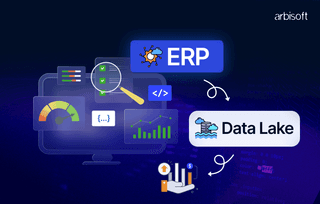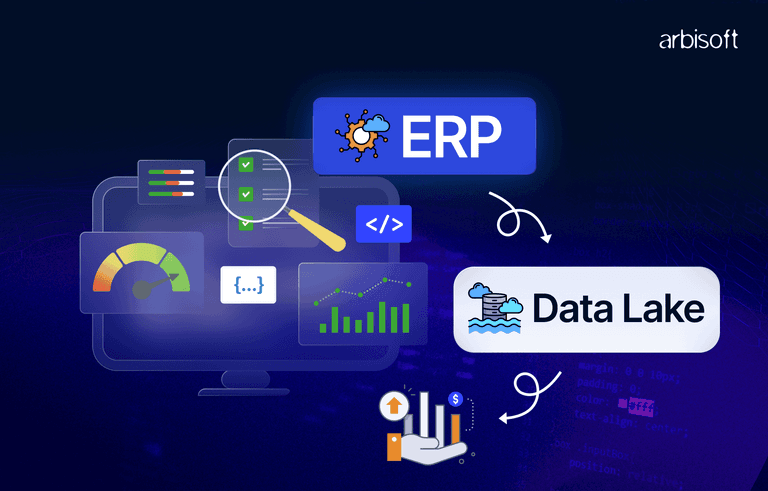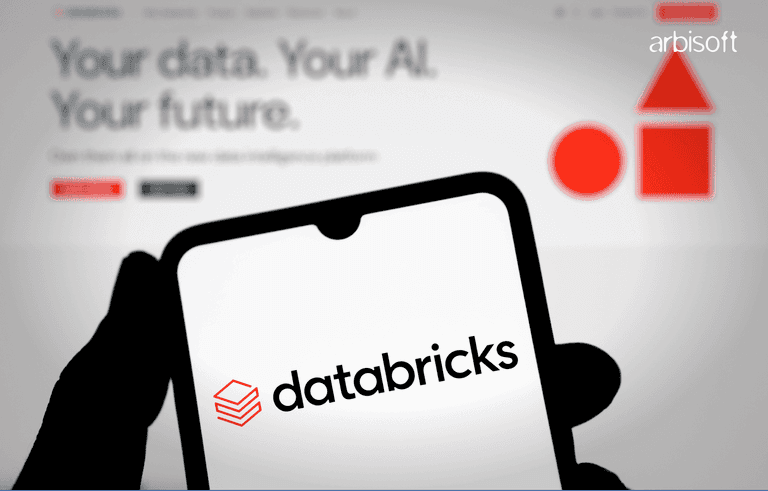We put excellence, value and quality above all - and it shows




A Technology Partnership That Goes Beyond Code

“Arbisoft has been my most trusted technology partner for now over 15 years. Arbisoft has very unique methods of recruiting and training, and the results demonstrate that. They have great teams, great positive attitudes and great communication.”
Agile Testing: Adapting to Changing Requirements

Build, Test, Repeat!
At Arbisoft, these three words are more than just a routine—they’re the foundation of everything we do. As a leading software service provider, we live by this cycle, ensuring every product we deliver meets the highest standards through our expert software testing services. For me, as an ISTQB Certified Agile Tester, software testing is more than a job; it’s a passion. It’s about making sure every piece of software we create is reliable, functional, and ready to delight users.
But before diving into the details, let’s take a step back and understand what software testing really means and why it’s so important.
What is Software Testing?
Think of software testing as a checkpoint for your app or program. It’s the process of carefully checking how an application works to make sure it does what it’s supposed to do. Testing ensures everything runs smoothly, whether it’s a simple task or a complex feature. It’s not just about finding errors—it’s about creating something users can trust.
Here’s why testing matters:
- Ensuring Quality: Nobody likes glitches or crashes. Testing makes sure the software works as expected, is secure, and performs well in any situation.
- Catching Bugs Early: Every piece of software starts with flaws. Testing helps uncover those issues early so they can be fixed before they become real problems.
- Happy Users: At the end of the day, it’s all about the people using the software. Testing ensures they get a product they can rely on, making their experience smooth and enjoyable.
Software testing isn’t just about ticking boxes or following steps. It’s about making sure the product you’re building is ready to meet the needs of real people in the real world. That’s what makes it so rewarding.
Why is Software Testing Important?
Think of software testing as the safety net that ensures everything works smoothly before it reaches the hands of your users. It’s not just about finding bugs; it’s about delivering a product that people can trust and enjoy. Here’s why it’s such a big deal:
- Better Quality, Better Experience: Testing makes sure your software runs as intended, meeting high standards for performance and reliability, a goal often supported by top-notch qa testing services.
- Saves Money in the Long Run: Fixing problems early is way cheaper and easier than dealing with them after launch.
- Happy Users, Loyal Customers: A well-tested product means fewer glitches, which keeps users satisfied and coming back for more.
- Avoid Big Risks: Testing helps catch security flaws or performance hiccups that could damage your reputation or cost you a fortune to fix.
- Stay on the Right Side of Regulations: It also ensures your product complies with industry rules and standards.
Common Software Development Life Cycle (SDLC) Models:
When it comes to creating software, having a roadmap makes all the difference. SDLC models give teams a clear structure to follow. Here are some of the most common ones:
1. Agile Model
- How It Works: Breaks the work into small, manageable chunks called sprints, allowing for quick progress and regular feedback.
- Phases: Planning, designing, coding, testing, deploying, and reviewing happen in continuous cycles.
- Best For: Projects that need to adapt to changing requirements or where customer collaboration is key.

2. Waterfall Model
- How It Works: Moves step-by-step, with each phase needing to be finished before the next one starts.
- Phases: From gathering requirements to maintenance, everything happens in a strict order.
- Best For: Projects with clear, unchanging requirements.
3. V-Model
- How It Works: Testing is built into every phase of development, ensuring quality checks at every step.
- Phases: From analyzing requirements to final acceptance testing, validation is prioritized.
- Best For: Projects that need rigorous testing and reliability.
4. Spiral Model
- How It Works: Focuses on managing risks by breaking work into cycles with lots of planning and evaluation.
- Phases: Includes planning, analyzing risks, engineering, and evaluating results.
- Best For: Large, complex projects that come with uncertainties.
5. Iterative Model
- How It Works: Builds the software step-by-step, with each version improving on the last.
- Phases: Plan, design, develop, test—then do it all over again for the next iteration.
- Best For: Projects that need flexibility and room for adjustments.
6. Big Bang Model
- How It Works: Starts coding right away with little upfront planning.
- Best For: Small projects with simple requirements or experimental ideas.
What is Agile Testing?
Agile testing flips the traditional approach to testing on its head. Instead of waiting until the end of development, testing happens alongside it. It’s all about teamwork, flexibility, and adapting as you go.
Here’s what makes Agile testing unique:
- Working Together: Developers and testers collaborate closely to catch problems early.
- Quick and Steady Progress: Testing happens in small, frequent cycles, just like the development process.
- Adapts to Change: Requirements often shift during development, and Agile testing is designed to keep up with those changes.
By integrating testing into every stage, Agile ensures the final product isn’t just functional—it’s something users will love.
Agile Testing: Adapting to Changing Requirements – A Certified Agile Tester’s Insight:
Agile testing is about staying flexible and adapting to whatever comes your way. In software development, things move fast, and being able to shift gears when new challenges or needs pop up is key. Agile testing is built around three main ideas:
- Flexibility: You’ve got to be ready to adjust when things change.
- Collaboration: It’s all about working together—developers, testers, and stakeholders—so everyone is on the same page.
- Continuous Improvement: The idea is that every step is a chance to learn and make things better.
One of the biggest strengths of Agile testing is its ability to deal with constantly changing requirements. That’s something traditional methods often struggle with.
Why Do Requirements Change?
In software development, change is just part of the game. Requirements can shift for all sorts of reasons:
- Market Shifts: The tech world is always evolving, and companies need to adapt to stay competitive.
- Customer Feedback: Users often give valuable insights that can lead to changes in the product.
- New Technologies: New tools and technologies come along and open up new possibilities.
- Business Priorities: As businesses grow, their goals and priorities shift, and the product may need to change to keep up.
For traditional testing methods, these changes can feel like a huge disruption, throwing everything off track and causing delays. However, Agile testing sees change as an opportunity to improve, not a setback. Instead of getting stuck, Agile teams embrace change, tweak the product, and keep moving forward.
By embracing change, Agile testing ensures that the software stays relevant, adaptable, and user-friendly—even as things evolve.
What are the Principles of Agile Testing in Handling Change?
1. Collaboration is Key to Success
Agile testing works best when everyone—developers, testers, and stakeholders—collaborates closely. Regular communication helps everyone stay on the same page, especially when things change. This reduces confusion and prevents the need for extra work later on. The goal is to work as a team, adjusting quickly to new needs and keeping the product on track.
2. Incremental and Iterative Testing Techniques
In Agile testing, things are broken into smaller parts. Instead of testing everything at once, the team tests in small pieces. This matches the way Agile works, with development happening in short cycles. Testing early and often helps catch problems before they become bigger, saving time and money in the long run.
3. Customer-Centric Approach
Agile testing always keeps the end user in mind. Testers don’t just check if the software works; they help create the features and define what’s needed from the user’s perspective. This ensures that any changes made along the way meet the customer’s needs and expectations. At the end of the day, the product should be something users will love.
4. Automation for Agility
Automation, supported by robust automation testing services, makes testing faster and easier in Agile. Automated tests give quick feedback on new changes, so the team can be sure everything works. This helps speed up development and ensures that updates happen smoothly. With automation, teams can respond to changes without slowing down the process.
5. Focus on Test Design and Maintenance
Agile testers focus on creating tests that can adapt as things change. They write tests that are easy to reuse and update, so the team doesn’t have to start from scratch every time something changes. This makes sure the tests stay strong and relevant as the project evolves.
6. Seeking Continuous Feedback from Stakeholders
Agile testing is all about improvement. Testers regularly ask for feedback from stakeholders to improve both the testing process and the software itself. This helps make sure the product stays in line with business goals and user needs. Continuous feedback means the product gets better and better over time.
The Role of Agile Testing in Adapting to Change
In Agile, testing isn’t just something that happens at the end of the process. It’s a continuous part of the journey. The whole idea is to stay flexible and work closely with the team. Here’s how testers adjust when things change:
1. Getting Involved from the Start
In Agile, testers aren't just the people who check if things work. They’re involved from the beginning. They team up with the Product Owners to help shape the user stories, get involved in sprint planning to make sure test cases line up with new changes, and give feedback during design reviews on how easy (or hard) things will be to test. By jumping in early, testers can spot potential issues sooner and help guide the whole team through any changes.
2. Testing in Small, Manageable Pieces
Instead of waiting until the very end to test everything, Agile testing happens in small, manageable chunks. This approach means testers can catch problems early before they pile up into bigger issues. Here’s why it works:
- Testing small sections reduces risk.
- Finding bugs early means fixing them is quicker and cheaper.
- Frequent testing makes sure that new changes don’t mess up what’s already working.
3. Keeping Test Plans Flexible
In Agile, test plans are kept simple and flexible. As the project evolves, so do the test plans. Testers can update them in real time, so they’re always working with the most current information. This way, there’s no wasted time on tests that are out of date or no longer necessary.
4. Collaborating to Clear Up Confusion
When things change, everyone needs to be on the same page. Agile testers constantly communicate with everyone on the team—developers, designers, and anyone else involved. They work together to clarify any new requirements, suggest ways to improve how testing is done, and make sure everyone knows about potential risks. It’s all about keeping the team aligned, even when the goalposts move.
5. Making Use of Automation
Automation plays a big role in Agile testing. It helps testers keep up with the pace of development. Automated tests can:
- Quickly check if the new changes work as expected.
- Spot if new features break anything that was working before.
- Speed up how quickly new features get delivered.
As the project moves forward, testers continually update the automated tests to make sure they’re in line with the latest changes. This helps keep everything running smoothly and quickly.
Example Case Study: Agile Testing in a Changing Landscape
Let’s suppose a major feature redesign is introduced mid-sprint due to a stakeholder’s feedback. As a certified Agile tester, here’s how should I do it:
- Immediate Collaboration with stakeholders: I will discuss the new requirements with the product owner to understand the rationale and implications.
- Impact Analysis: Working with the developers, I will identify areas of the codebase and test suite that need updates.
- Updating Tests: I quickly update existing test cases and automated scripts to reflect the redesign.
- Frequent Testing: I conduct exploratory testing alongside automated regression tests to ensure the redesign doesn’t introduce new defects.
This proactive approach ensured the team delivered the redesigned feature on time, with minimal disruptions to overall quality.
The Tester’s Role in an Agile Model
As an Agile tester, you play a crucial role in connecting the development team with business stakeholders. Your ability to understand and adjust to shifting requirements makes sure the product stays on track with its goals while maintaining its quality. You’re there to help ensure everything runs smoothly, even when things change quickly.
Conclusion
Agile testing is all about working together, staying flexible, and adapting to change. By following the principles of the Agile manifesto, testers can consistently deliver high-quality results—no matter how much the project evolves.
In the world of Agile, changing requirements is just part of the process. Agile testing gives you the tools and mindset to handle those changes confidently and efficiently. By focusing on collaboration and staying adaptable, you can ensure that quality isn’t lost, even when things are constantly shifting.
Have you faced any unique challenges with changing requirements? We’d love to hear your experiences! Let’s share ideas and learn from each other as we continue to grow as Agile professionals.
























